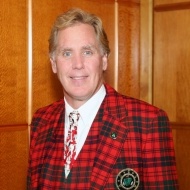Harrison Minchew joined Arnold Palmer Design Company in 1982, and as vice president, director of design services, and senior golf course architect, he was completely involved in the design of over 140 golf courses worldwide. Today, as president of Signature Golf Design, Minchew’s nearly three decades of personal interaction with the finest golfers on the globe and a huge cadre of celebrities has given him unique insight into the courses professionals prefer, as well as the process,  management, and marketing involved in producing a successful outcome for all. He worked on Four Seasons Resort Aviara in Carlsbad, the Palmer Course at PGA West, and Tradition Golf Club in LaQuinta, California. Minchew’s other credits include Seattle Golf Club and, in Florida, Adios Golf Club in Deerfield Beach, and the King and Bear at the World Golf Village in St. Augustine. He also, with Palmer, designed the Palmer and Smurfit Courses in County Straffan, Ireland, site of the 2006 Ryder Cup, and Tralee Golf Club, in County Kerry. He worked closely Palmer’s right-hand man, the late Ed Seay.
management, and marketing involved in producing a successful outcome for all. He worked on Four Seasons Resort Aviara in Carlsbad, the Palmer Course at PGA West, and Tradition Golf Club in LaQuinta, California. Minchew’s other credits include Seattle Golf Club and, in Florida, Adios Golf Club in Deerfield Beach, and the King and Bear at the World Golf Village in St. Augustine. He also, with Palmer, designed the Palmer and Smurfit Courses in County Straffan, Ireland, site of the 2006 Ryder Cup, and Tralee Golf Club, in County Kerry. He worked closely Palmer’s right-hand man, the late Ed Seay.
I grew up in Augusta, Georgia, and didn’t really realize how big the Masters Tournament was when I was growing up. I went to the tournament as a child, and by the age of fifteen, I had a job carrying cameras for an Associated Press photographer who had been a war correspondent in Vietnam, so he wasn’t the type to sit around. We were always on the move up and down the hills and through the trees at Augusta National.
After seeing him play in the Masters as a kid, I ended up working for Arnold Palmer for twenty-seven years before I started my own company. During the time I worked for Palmer, I was able to work on a lot of great teams, and with some pretty exceptional leaders. One of those leaders was Ed Seay.
Ed was a people person. He was the type of person who included everybody in the process – even the toothless bulldozer driver. Ed made sure everyone respected that bulldozer driver because he was part of the team – part of the team that was going to make everyone look good. We were just hired guns who drew lines on a paper. The construction people were the ones who made our vision happen. Ed really taught us how to treat people and get the most out of them. He was such an inspiration because I really wasn’t much of a people person. Ed taught me a lot of life lessons in that way.
Arnold didn’t let too many people get close to him, but he let Ed in. Ed knew how to handle Arnold.
There was one particular time, when we were working on Tralee in Ireland, that Ed wanted to include everybody in an outing. He was trying to organize everyone on the project, all the laborers, architects, and engineers, to go to local pub in Tralee. All the laborers were headed there anyway, but Ed convinced everyone else to come along as well so we could really bond as a team. Everyone – including Mr. Arnold Palmer.
That pub was completely packed, and Arnold stayed at the pub with everyone for about five hours, enjoying the music, conversation, and color. The team just loved being able to spend time with Arnold because usually they didn’t have much access to him. Bringing in Arnold, who was a hero to all of us, was Ed’s way of rewarding the team for a job well done.

